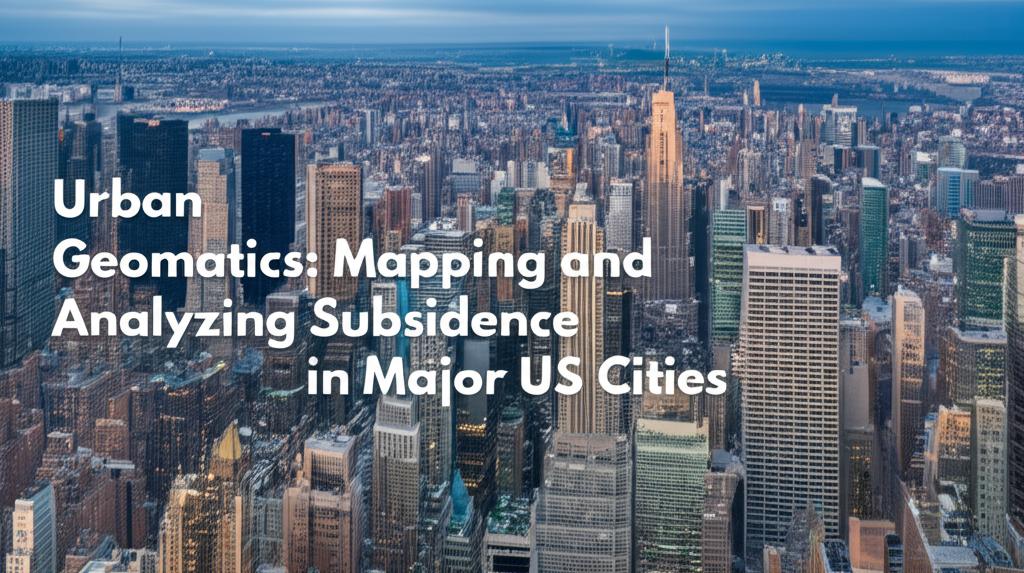Urban geomatics plays a crucial role in understanding and addressing the growing concern of land subsidence in major U.S. cities. This phenomenon, the gradual sinking or settling of the ground surface, poses significant risks to infrastructure, property, and public safety. By leveraging advanced geospatial technologies, experts can accurately map, monitor, and analyze subsidence patterns, providing vital information for urban planning and risk mitigation.
Several factors contribute to urban subsidence, including groundwater extraction, mining activities, natural compaction of sediments, and the sheer weight of urban development. As cities expand and populations grow, the demand for resources like water often leads to increased groundwater pumping, which can accelerate subsidence rates. Coastal cities are particularly vulnerable, as subsidence exacerbates the effects of sea-level rise, increasing flood risk.
Geomatics offers a suite of powerful tools for studying urban subsidence. Interferometric Synthetic Aperture Radar (InSAR) is a key remote sensing technique. By comparing radar images of the Earth's surface taken at different times, InSAR can detect subtle changes in ground elevation with millimeter-level accuracy over wide areas. This allows for the creation of detailed subsidence maps, identifying hotspots and tracking changes over time.
Global Navigation Satellite Systems (GNSS), including GPS, provide precise point-based measurements of ground movement. Continuously operating reference stations (CORS) established in urban areas can track vertical displacement, offering valuable ground-truth data to complement InSAR observations. Light Detection and Ranging (LiDAR) technology contributes by creating high-resolution digital elevation models (DEMs) that serve as a baseline for monitoring changes and assessing the impact of subsidence on the urban landscape.
Major U.S. cities across different regions are experiencing varying degrees of subsidence. For instance, areas in Houston, Texas, have seen significant subsidence historically linked to extensive groundwater and oil extraction. In California, cities in the Central Valley and coastal regions like the San Francisco Bay Area are monitored for subsidence, primarily driven by groundwater overdraft for agriculture and urban use. Along the Atlantic coast, cities such as Norfolk, Virginia, and Miami, Florida, face a compounded threat from subsidence and rising sea levels, heightening concerns about coastal flooding and infrastructure resilience. New York City has also shown localized areas of subsidence, influenced by a combination of natural sediment compaction and the load of buildings.
Analyzing the data collected through these geomatic techniques involves integrating various datasets within a Geographic Information System (GIS) framework. This allows for the visualization of subsidence patterns, correlation with potential causative factors (like groundwater withdrawal locations or geological formations), and the development of predictive models. These models can help forecast future subsidence and assess potential impacts on critical infrastructure such as buildings, roads, bridges, and underground utilities.
The insights gained from urban geomatics are crucial for informed decision-making. City planners, engineers, and policymakers can use this information to implement targeted mitigation strategies. These might include regulating groundwater extraction, implementing water conservation measures, improving urban drainage systems, and adapting building codes and infrastructure design to account for potential ground movement. Early detection and continuous monitoring are key to minimizing the economic and social costs associated with urban subsidence. As technology continues to advance, the precision and scope of geomatic tools will further enhance our ability to manage this complex urban challenge.

